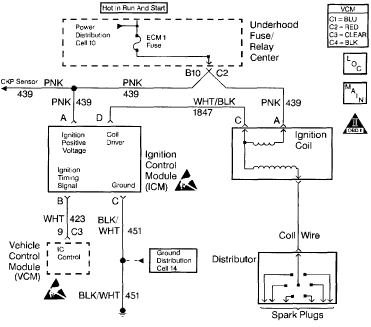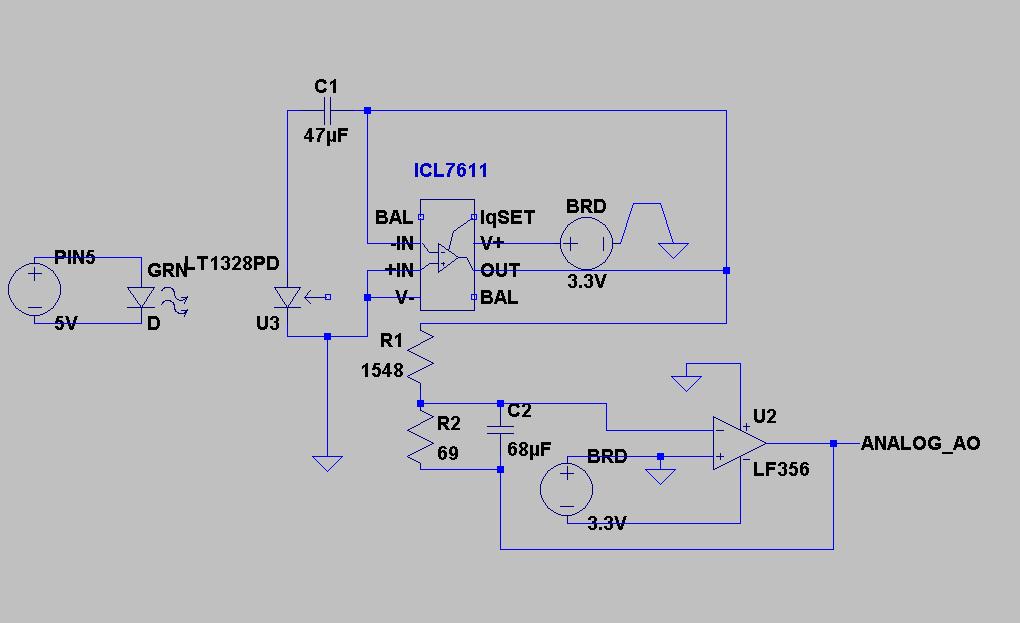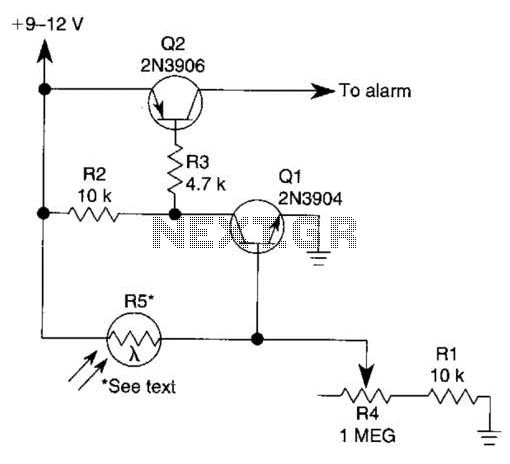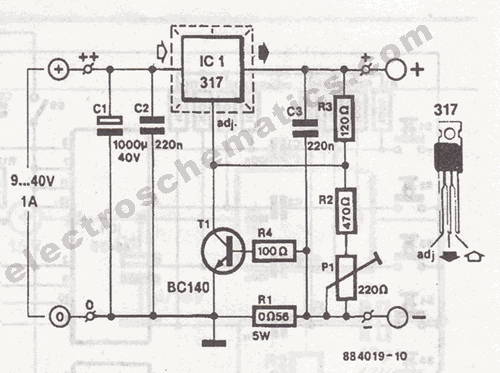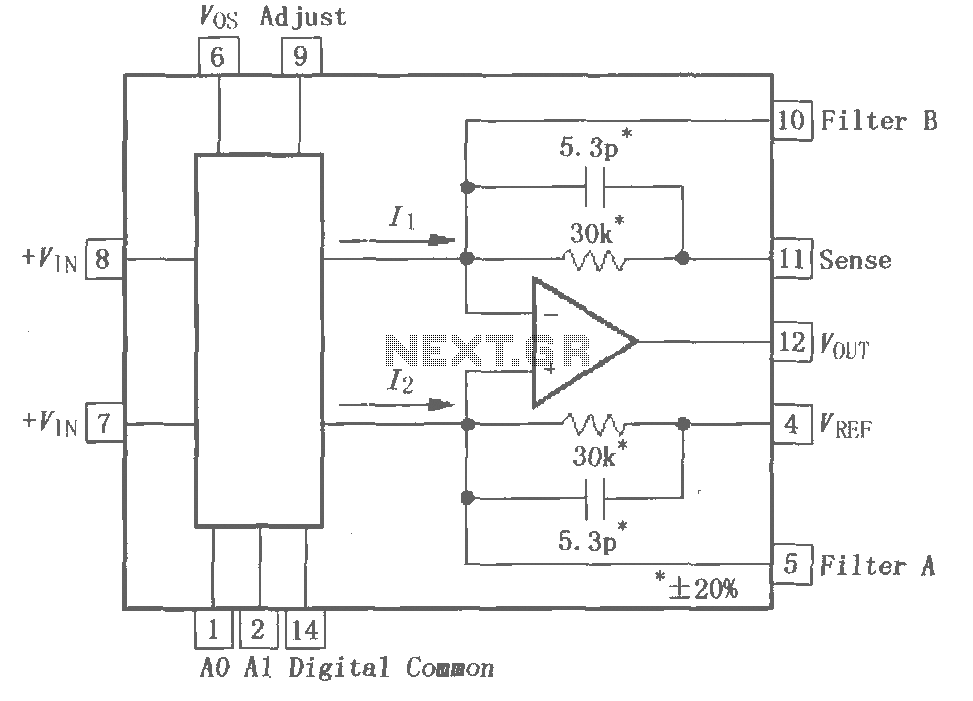
Atv Downconverter Circuit
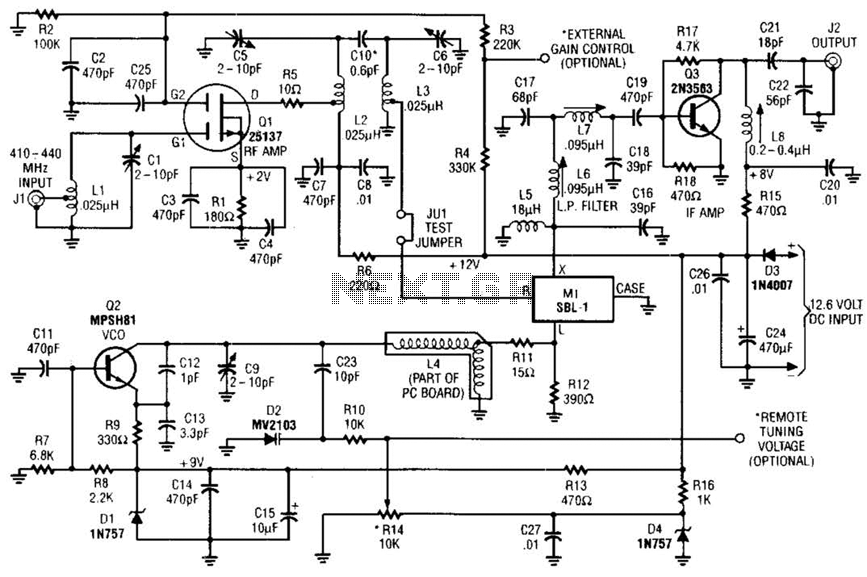
This RF converter converts amateur TV signals in the 420 to 450 MHz region to VHF channel 3 or 4, allowing reception of those signals on a standard TV receiver. RF amplifier Q1 feeds mixer M1, and Q3 acts as an IF amplifier. Q2 is an oscillator operating around 378 MHz and is tunable over about a 30 MHz range.
The RF converter is designed to facilitate the reception of amateur television signals within the specified frequency range of 420 to 450 MHz by converting these signals to VHF channels 3 or 4. This conversion enables standard television receivers to process and display the amateur TV signals effectively.
The circuit architecture includes several critical components. The RF amplifier (Q1) serves to boost the incoming RF signals before they are fed into the mixer (M1). The mixer is essential for down-converting the frequency of the RF signals to an intermediate frequency (IF) that can be further processed. The output of the mixer is then amplified by the IF amplifier (Q3), which ensures that the signal remains strong enough for subsequent stages of processing.
An important feature of this RF converter is the oscillator (Q2), which operates around 378 MHz. This oscillator is tunable over a range of approximately 30 MHz, allowing for flexibility in the conversion process. The tuning capability is crucial for accommodating variations in the incoming signal frequencies, ensuring optimal performance and signal clarity.
Overall, this RF converter circuit is an effective solution for receiving amateur TV signals, utilizing a combination of amplification, mixing, and tuning to provide a reliable output compatible with standard television equipment. This RF converter converts amateur TV signals in the 420- to 450-MHz region to VHF channel 3 or 4, allowing reception of those signals on a standard TV receiver. RF amplifier Ql feeds mixer Ml, and Q3 acts as an IF amplifier. Q2 is an oscillator operating around 378 MHz and is tuneable over about a 30-MHz range. 🔗 External reference
The RF converter is designed to facilitate the reception of amateur television signals within the specified frequency range of 420 to 450 MHz by converting these signals to VHF channels 3 or 4. This conversion enables standard television receivers to process and display the amateur TV signals effectively.
The circuit architecture includes several critical components. The RF amplifier (Q1) serves to boost the incoming RF signals before they are fed into the mixer (M1). The mixer is essential for down-converting the frequency of the RF signals to an intermediate frequency (IF) that can be further processed. The output of the mixer is then amplified by the IF amplifier (Q3), which ensures that the signal remains strong enough for subsequent stages of processing.
An important feature of this RF converter is the oscillator (Q2), which operates around 378 MHz. This oscillator is tunable over a range of approximately 30 MHz, allowing for flexibility in the conversion process. The tuning capability is crucial for accommodating variations in the incoming signal frequencies, ensuring optimal performance and signal clarity.
Overall, this RF converter circuit is an effective solution for receiving amateur TV signals, utilizing a combination of amplification, mixing, and tuning to provide a reliable output compatible with standard television equipment. This RF converter converts amateur TV signals in the 420- to 450-MHz region to VHF channel 3 or 4, allowing reception of those signals on a standard TV receiver. RF amplifier Ql feeds mixer Ml, and Q3 acts as an IF amplifier. Q2 is an oscillator operating around 378 MHz and is tuneable over about a 30-MHz range. 🔗 External reference
